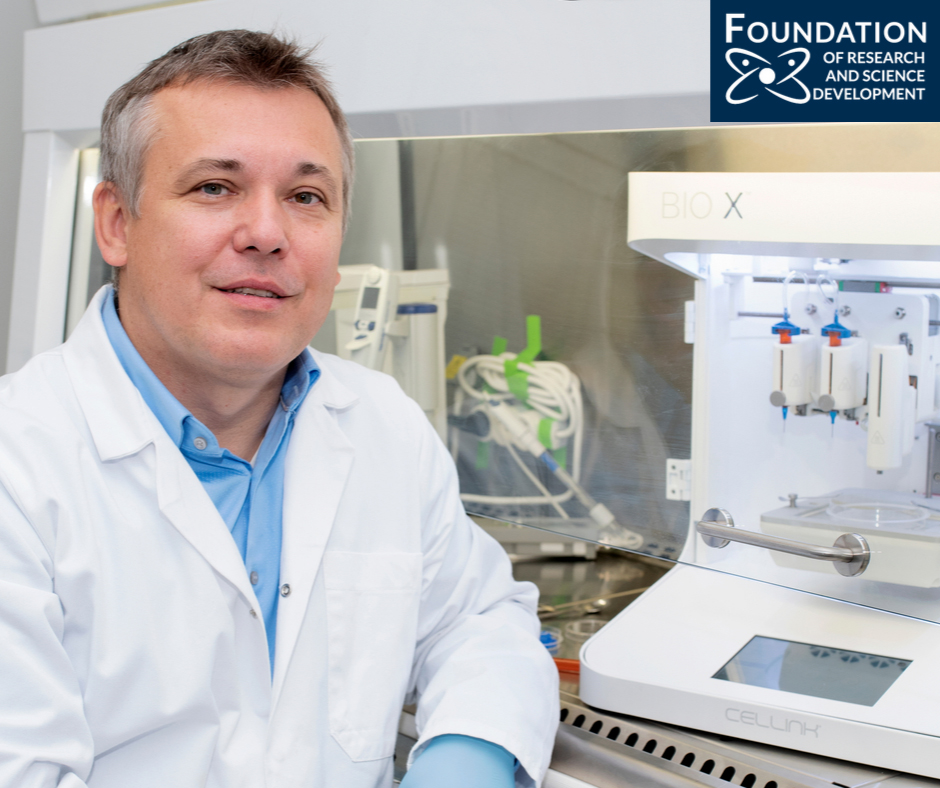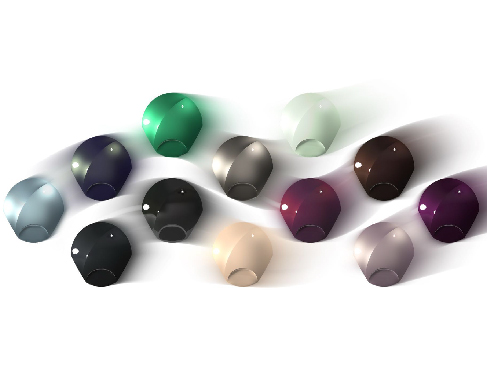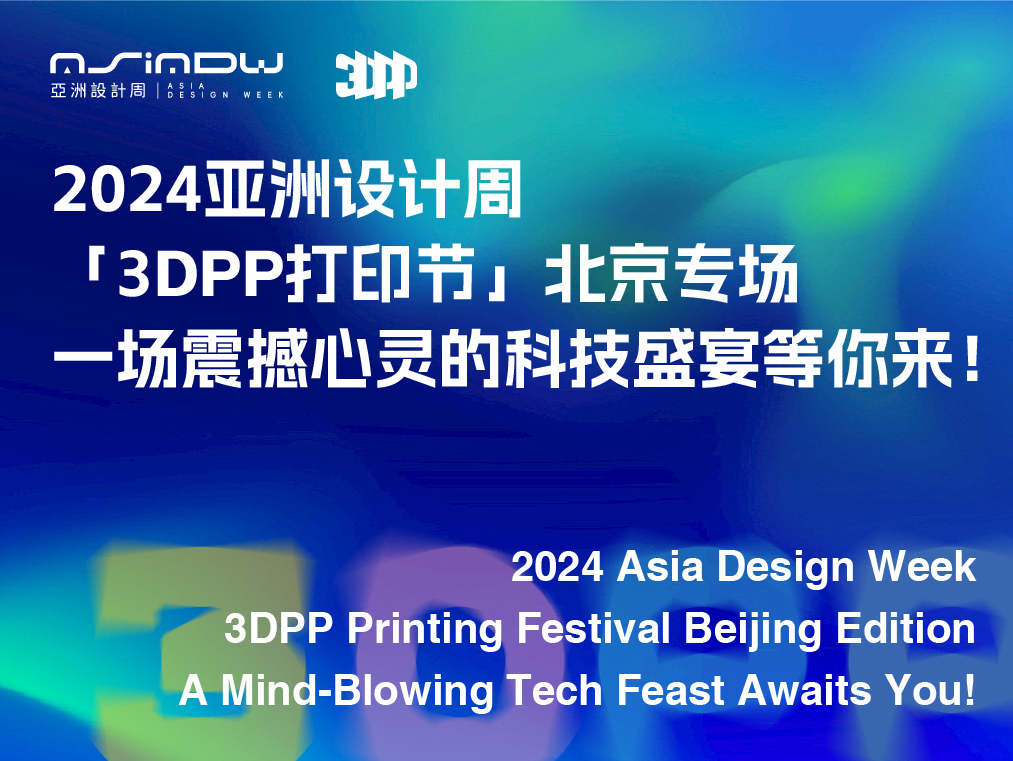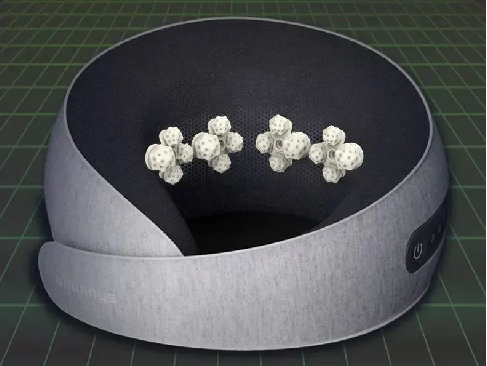

就医学而言,每一步都是漫长的一步,临床试验需要花费数年时间,但并没有太大变化。例如,自首次成功进行心脏移植以来已有50年了,如今仍需要人类捐助者。多年以后,心脏移植仍然存在风险和复杂的程序。借助3D生物打印技术,越来越多的研究人员正在创建功能性类器官,但我们似乎离植入器官还很远。我们不断听到专家发表:增材制造已经发展了非常多的行业和学科,但至少没有我们期望的那么快。但是每隔一段时间,我们就会听到有关医生试图尝试不可能的故事,这就是米歇尔·沃佐拉(Michal Wszola)在过去十年中一直在做的事情。普通外科医师和移植医师在整个职业生涯中与患者保持亲密关系,这促使他寻找糖尿病、慢性胰腺炎和肾脏疾病的解决方案。波兰专家和第一个具有微脉管系统的仿生胰腺的创造者谈到了未来使用生物打印技术进入医学革命的必要性。
Whenever the futuristic visions of the past are closer to becoming a reality we wonder what the next step for humanity will be. But when it comes to medicine, every step is a long one, pre-clinical and clinical trials take years, and if we look at some of the known facts, the discipline has advanced but it hasn’t changed very much. For example, it’s been 50 years since the first successful heart transplant, and human donors are still required today. Heart transplants are still risky and complex procedures now so many years later. Artificial organs are the next step beyond this. With the help of 3D bioprinting technology more and more researchers are creating functional organoids but we still seem far away from implanting organs. We keep hearing from experts that additive manufacturing has advanced so many industries and sciences, but not medicine, or at least not as much we expected it would. But every once in a while, we hear stories about doctors attempting to ride the wave of the impossible, and that is what Michal Wszola has been doing for the last ten years. The general surgeon and transplantologist’s closeness to patients throughout his career has driven him to search for solutions to diabetes, chronic pancreatitis and kidney disease, some of the most common illnesses he treats every day. The Polish-born specialist and creator of the first bionic pancreas with microvasculature spoke to 3DPrint.com about the future of his venture as well as the need to use bioprinting to advance into the next chapter of the medical revolution.
2009年,Wszola在波兰华沙成立了研究与科学发展基金会,以加强医学和生物医学领域的教育和研究。Wszola一直在积极寻求突破性的医学疗法,以帮助患有糖尿病和继发性疾病的患者以及被转介到胰腺或胰岛移植病房的患者。该基金会目前的重点是针对仿生胰腺的3D生物打印项目,该器官可以使糖尿病患者实现正常功能,也将取代对慢性胰岛素治疗的需求。他的团队还开发了两种可用于胰岛的生物墨水,这些墨水将很快在市场上销售。
In 2009 Wszola established the Foundation of Research and Science Development in Warsaw, Poland, to enhance educational and research activities in the field of medical and biomedical sciences. Wszola has been actively searching for groundbreaking medical therapies to help patients with diabetes and secondary problems, as well as patients that are referred to the transplantation wards for either pancreas or islet transplantation. The current focus of the Foundation is on a 3D bioprinting project for a bionic pancreas, an organ that could enable people with diabetes to attain normal functions and will also replace the need for chronic insulin therapy. His team also developed two bioinks to be used with pancreatic islets, which will be commercially available soon.
该项目涉及对3D支架以及功能性血管和胰岛的生物打印,因此,将形成适合移植的全功能仿生胰腺。
The project involves bioprinting of 3D scaffolds along with functional vessels and pancreatic islets and as a result, the forming of a fully functional bionic pancreas that would be suitable for transplantation.
“去年三月,我们首次使用老鼠的胰岛细胞和猪的胰岛细胞对仿生胰腺进行了生物打印,所产生的器官是普通胰腺大小的三分之一; 但是在这种情况下,大小并不重要,因为我们只需要负责胰岛素生产的胰岛功能。我们认为重点准备好新的胰腺以治愈糖尿病,而不是修复天然器官。在我们进行生物打印的器官中,我们可以放置一百万个胰岛,这已经足以治愈糖尿病。”
“Last March, we bioprinted the bionic pancreas for the first time using islet cells from mice and another from pigs, creating an organ that is one third the size of a regular pancreas; but in this case, the size is not important since we just want the function of the islets, responsible for the production of insulin. What my team and I are interested in, is to have a pancreas ready to cure diabetes, not to repair the native organ. In the organ we bioprinted, we can place one million pancreatic islets, which is already sufficient to cure diabetes.”
仿生胰腺项目旨在从患者自身的干细胞中创建定制的胰腺,这将消除任何排斥的风险。然后将干细胞转化为产生胰岛素和胰高血糖素的细胞并进行生物印记;最后,将在人类移植之前对仿生胰腺进行功能测试。肝脏、胰腺或肾脏等器官的繁殖非常复杂,因为它们需要血管系统,在这种情况下,血管形成对Wszola及其团队来说是一个重大挑战。生物印制的器官需要具有密集的血管网络,以便所有胰腺胰岛细胞都能获得充足的葡萄糖和氧气。在基金会实验室,Wszola和他的团队使用CELLINK生物打印机进行实验。
The bionic pancreas project aims to create a customized pancreas from the patient’s own stem cells, which would eliminate any risk of rejection. Stem cells will then be transformed towards cells producing insulin and glucagon and bioprinted; finally, the bionic pancreas would be tested for functionality prior to the human transplant. Organs like the liver, pancreas or kidneys are complex to reproduce since they require a vascular system, and in this case, vascularization was a major challenge for Wszola and his team. The bioprinted organ needed to have a dense vascular network so that all pancreatic islet cells would be well supplied with glucose and oxygen. At the Foundation lab, Wszola and his team use CELLINKbioprinters to conduct their experiments.

用老鼠进行的动物研究是首次尝试观察生物打印的微脉管系统如何向新的胰腺生长。关键是分析该过程将花费多长时间,一旦掌握了这个数字(可能从几天到几周甚至几个月不等),将与包括医学华沙大学、华沙工业大学、内基实验生物学研究所、Medispace和婴儿耶稣医院一起发表论文。
The animal studies with mice are a first attempt to observe how bioprinted microvasculature can ingrow into the new pancreas. The key is to analyze how long this process will take and once he has that number (which could be anything from days to weeks or even months), he will publish a paper along with colleagues from the Foundation and a consortium, which includes the Medical University of Warsaw, Warsaw University of Technology, Nencki Institute of Experimental Biology, Medispace and Infant Jesus Hospital.
波兰在胰腺研究方面已经拥有强大的医学背景。早在1965年,斯坦尼斯拉夫·莫斯卡列夫斯基(Stanislaw Moskalewski)首次能够成功地从切碎的豚鼠的胰腺中分离出胰岛。当然,在美国进行了更多的研究,随后又进行了一些实验,这些实验导致从供体胰腺进行胰岛移植,但是,Wszola认为,这种方法存在两个主要问题:缺乏脉管系统和复杂的胰岛分离–从胰岛中去除了细胞外基质。因此,他于2013年开始领导一个团队,研究生物打印,帮助他们弄清楚如何利用脉管系统发展胰岛。
Poland already has a strong medical background in pancreatic research. Back in 1965, Stanislaw Moskalewski was able to, for the first time, successfully isolate islets from the pancreas of minced guinea pigs. Of course, more investigations followed with later experimentations in the United States leading to islet transplantation from donor pancreas, however, Wszola believes that this method has two main problems: lack of vasculature and complex islet isolation–which removes the extracellular matrix from the islets. So he began leading a team in 2013 to learn how bioprinting can help them figure out how to develop islets with vasculature already incorporated.
“我认为生物打印可以解决胰岛血管系统的问题,因此我开始寻找在医学上使用它的方法,并很快了解到我想要打印的是一个具有活岛、内皮细胞和血管的器官。在基金会,我们使用压力控制生物打印并研究生物打印每种细胞所需的最大压力。”
“I decided that bioprinting could solve the islet vasculature problem so I began searching for ways to use it in medicine and soon learned that what I wanted to print was an organ with viable islets, endothelial cells, and vessels. At the Foundation, we use pressure control bioprinting and study the maximum pressure needed for bioprinting each kind of cell.”
该研究的另一部分是致力于建立一种特殊的生物墨水,因为Wszola声称商业购买的生物墨水不适合临床移植。所有生物墨水都将胰岛与外部环境隔离开来,这使得胰岛素难以从胰岛和氧气转移到胰岛细胞中,因此基本上会使其死亡。 他创建了一家生物墨水公司Polbionica,以将其商业化出售。一种生物墨水模仿了胰岛的细胞外基质并具有渗透性,与我们在自然组织中发现的相似。第二种生物墨水使科学家能够对胰岛周围的血管进行生物打印,Wszola及其团队将这两种墨水用于制造仿生胰腺。
Another part of the study was dedicated to establishing a special bioink, since Wszola claims that the bioinks they could commercially buy were not suitable for the clinical transplantation. All bioinks were isolating the islets from the outer environment, which makes the transfer of insulin from pancreatic islets and oxygen into the islet cells difficult, so basically letting them die. Along with colleagues, he created bioinks and Polbionica, a startup, to sell them once they become commercially available. One of the bioinks imitates the extracellular matrix of the islets and has permeability so that it is similar to what we find in natural tissue; the second bioink enables scientists to bioprint vessels around the islets and both are used to create the bionic pancreas by Wszola and his team.

Wszola 说他是“移植外科医师”,他的目标是进行人体临床试验。当我们完成对老鼠的当前研究后,将转向更大的动物,这将需要一到两年的时间。如果一切按计划进行,我们预计将在三到五年内移植生物打印的仿生胰腺。”
Wszola went on to explain that he is “a transplant surgeon so my objective is to move on to human clinical trials. When we finish the current study with mice, we will move to bigger animal models, which will take between one and two years. After the results from the preclinical trials are analized we could be ready to begin the clinical trials. If everything moves as planned, we expect to be transplanting bioprinted bionic pancreas in three to five years.”
许多工作还涉及将干细胞转化为胰岛素的实验室工作。Wszola声称,比起胰腺细胞更喜欢使用干细胞,但是这种技术仍处于起步阶段,可能需要几年的时间才能发展起来。 他认为,第一步是“开始与胰岛移植并获得一些积极的反馈,但是,干细胞将比胰岛移植更好地工作,因为它可以帮助更多的患者。”
Much of the work also involves lab work to transform stem cells into insulin. Wszola claims he prefers to use stem cells than pancreatic cells, but this technique is still in its infancy and could take some years to develop. He believes that the first step is to “start transplantation with the islets and get some positive feedback, however, stem cells will work better than islet transplantation because it could help a larger group of patients.”
“我个人知道有太多人因胰腺疾病而面临危及生命的状况,我每天看到需要帮助的患者,最重要的是,我需要告诉他们一些可以给他们未来带来希望的东西,这就是驱动我个人使命的原因。疾病背后的成千上万的人类帮助我,努力地开展研究并实现临床试验的可能性。我相信当我看到我的患者走出医院,并确信他们没有糖尿病的生存时,就是我最幸福的时刻。”
“I personally know too many people facing life threatening conditions due to pancreatic disease, I see the patients that need help every day, and above all, I need to tell them something that will give them hope for the future. This is what drives my personal mission, the thousands of humans behind the disease help me work very hard to carry out research and fulfill the possibility to start clinical trials. I believe my work will be finished when I see my patients walking out of the hospital, confident that they have survived and don’t have diabetes,” concluded the expert.


2024亚洲设计周「3DPP打印节」北京专场,一场震撼心灵的科技盛宴等你来!
2024-07-26
